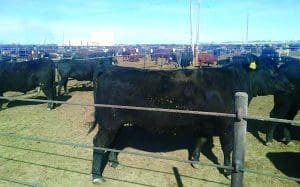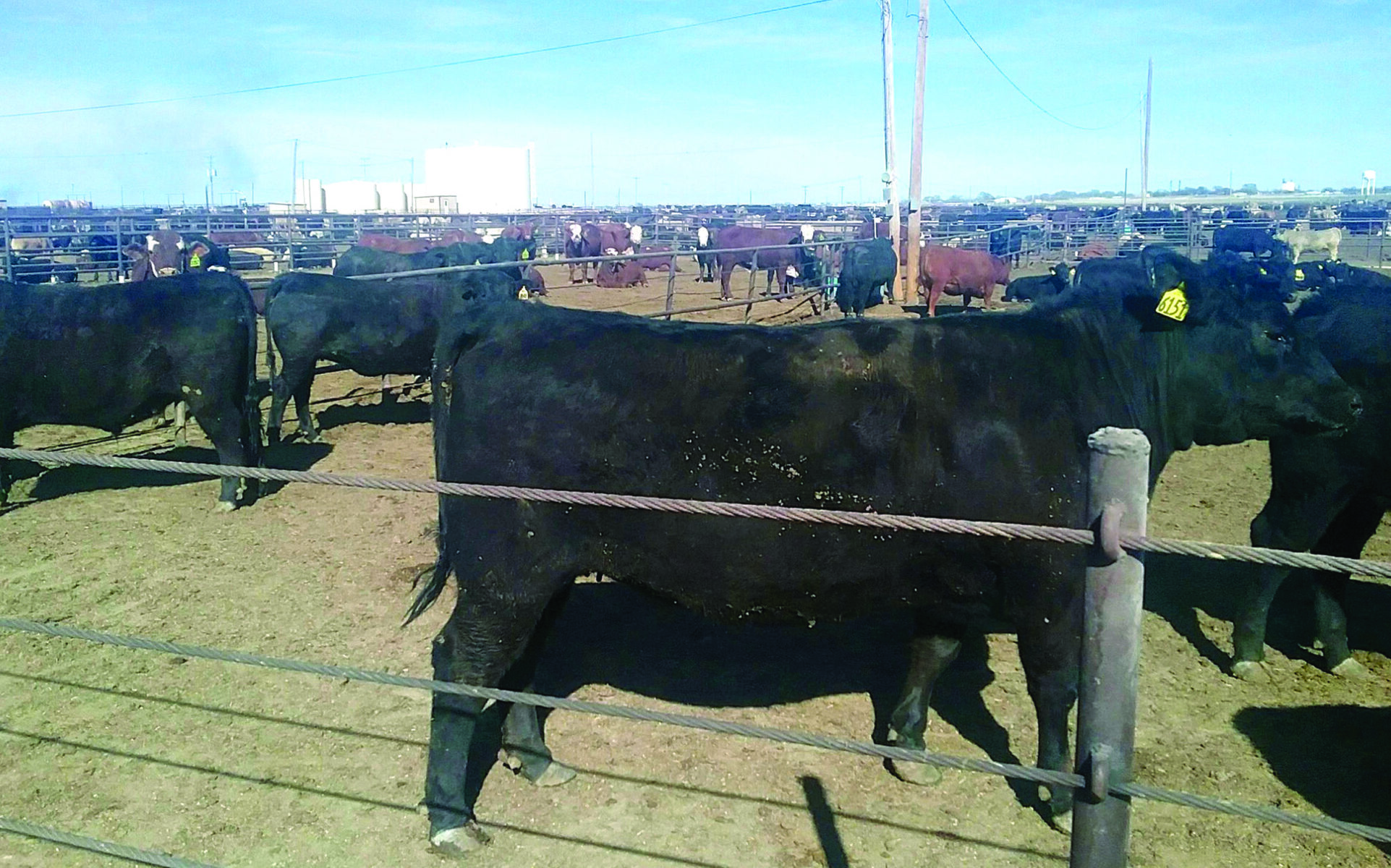
By Larry Stalcup, Contributing Editor
Beef-on-dairy feeding has become popular in recent years. The alternative feeding program could gain even more respect if drought continues across the Southern Plains. But drought or no drought, the beef-on-dairy cross may be here to stay until beef cow supplies increase substantially.
Northern dairy producers were among the first to try using Angus and Angus-cross sires in dairy cow breeding programs. That was after 2010 when dairies were pressed to survive poor economic conditions. They sought better profit potential. By breeding beef sires to dairy cows, they saw greater value in the crossbred calves when compared to dairy calves that sold for next to nothing.
Now, hundreds of thousands of beef-on-dairy cattle are on feed. They’re earning their keep and are often unrecognizable as half dairy. Brady Miller, marketing director for Texas Cattle Feeders Association, says potentially “up to 15 percent of the cattle on feed in our Texas, Oklahoma and New Mexico region [could be] beef-on-dairy. That could run about 400,000 cattle.”
Jason Smith, Texas A&M University AgriLife beef cattle specialist in Amarillo, says there has been much success in feeding beef-on-dairy composites. Quality genetics make them work. And they can fool even the sharpest eyed cattleman at his first glance.
“Sometimes it’s difficult to visually separate beef-on-dairy composite calves from straight-bred beef calves,” Smith says. “Many people could stop by a pen with those calves and incorrectly assume they are straight-bred beef calves with premium genetics.”
Packer discounts on beef-on-dairy or dairy animals have been common. But as cattle supplies continue to decrease, discounts are apparently being lowered. One reason may be the quality of carcass being produced, and the ability of beef-on-dairy to adapt to value-added-calf programs that can generate premiums for producers, feeders and packers.
“One of the opportunities presented to composite calves is they are easy to enroll in certain value-added-type programs, such as age and source verification,” Smith tells CALF News. “Much is due to how they are raised. Most are AI sired and those calves are also easy to enroll in certain genetic-focused, value-added programs.
“In today’s market, feeder cattle enrolled in value-added programs usually sell for more than calves that are not preconditioned or on a vaccination protocol. That applies to beef-on-dairy composites just as it does straight-bred beef calves.”
Beef-on-dairy quality was illustrated in a Feb./March 2022 CALF News article, “Beef With a Side of Dairy” (https://calfnews.net/magazine/calf-news-archive/). Hy-Plains Feedyard manager Tom Jones was a pioneer in diving deep into beef-on-dairy production. He indicated that of some 4,000 beef-on-dairy crosses shipped from the Hy-Plains yard in Montezuma, Kan., about 91.5 percent graded Choice or better. Their average ribeye area was 13.84 inches, dressing score was 62.6 percent, carcass weight averaged 866 pounds and 76.4 percent were Yield Grade 3 or better.
Liver Abscess Issues
A key health issue with dairy animals is liver abscess. They are often more apt to have liver abscess issues than beef animals. Dairy animals are typically on feed much longer than beef animals. They can be at the bunk a year or longer, compared to 120 to 150 days for beef animals. They are exposed to more high-energy, concentrated grain rations.
“Ruminal acidosis is often considered to be the major cause of liver abscesses,” Smith says. “But I believe there are other means through which bacteria can enter the blood stream and contribute to the problem.
“Dairy-influenced calves tend to be ‘dirt eaters’ and often lick things and other animals more frequently than straight-bred beef calves. Their behavior may contribute to the prevalence of liver abscesses.
“With liver abscess being a major issue in beef-on-dairy composites, it’s going to be a factor that will help push the industry toward finding solutions,” Smith continues. “There is currently an industry-wide focus on mitigating liver abscesses – not just in dairy or beef-on-dairy animals.”
“We’re collecting more data to get a better handle on whether there can be an improvement in solving liver abscess problems, as well as other health issues and performance outcomes,” Miller adds.
Grazing Training
Since most dairy calves have never been introduced to grazing, they often won’t take advantage of what lush winter wheat or grass offers them.
“Some stocker producers have learned the hard way,” Miller says. “Beef-on-dairy calves often won’t graze wheat pasture or stalks. They’ve been given a bottle their whole life or had someone feeding them. I’ve been told they’ll stand at the gate and wait for someone to show up and feed them.”
“Grazing is a learned action,” Smith adds. “That can be a concern if they didn’t have a dam to teach them how to be a calf. Most calves will figure that out, but others would benefit from having a ‘trainer animal’ turned out with them. That could be either a straight-bred or a beef-on-dairy animal that knows how to graze.
“Calves that have gone through a grow yard or backgrounding period and consumed a high-roughage ration will likely learn how to graze a little faster, and most calves would benefit from a transition period.”
Smith says the long-term success of beef-on-dairy programs is based on the use of superior genetics and a preventative calf health program.
“Production of a quality beef-on-dairy calf begins with the pregnant dairy cow,” he says. “Calves should receive adequate quantity and quality of colostrum within the first few hours of life. It could determine whether a calf is going to survive through finishing, or be a profit or loss to the feeder.”
Miller says the fact that dairy and beef-on-dairy animals grade well offers an option for cattle feeders.
“Consumers tell us they like quality. Beef-on-dairy will help us provide that quality,” he says. “Beef-on-dairy has a place. It could be a super good product for years to come.”







